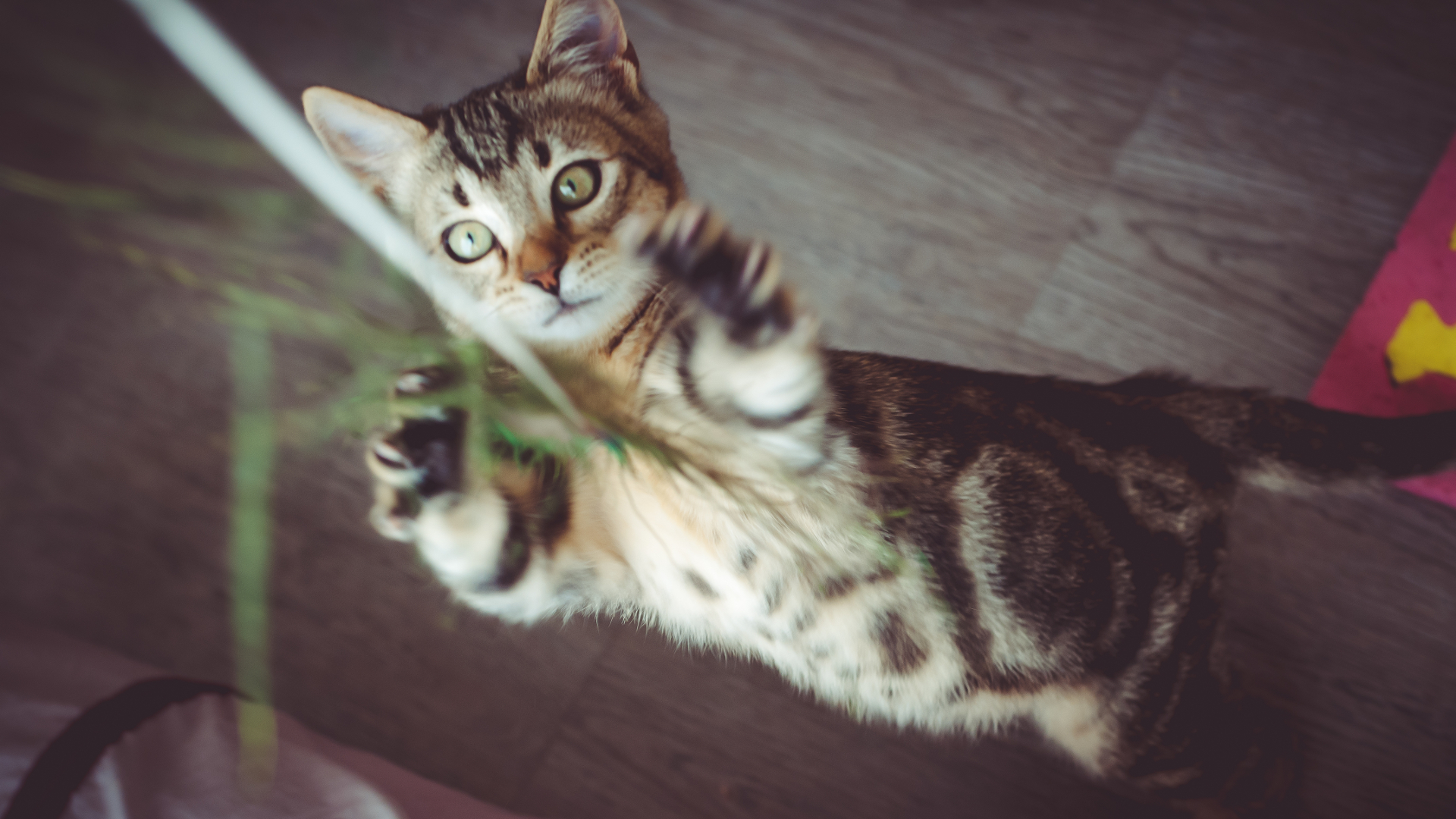Where is the fungus found?
Several different fungi found throughout the world can cause ringworm, however, the vast majority of cases in cats and dogs are caused by Microsporum canis, Microsporum gypseum, or Trichophyton species. The fungus is most commonly found either on an infected animal or in the living quarters of infected animals. Spores from infected animals can be shed into the environment and live for up to 24 months. Humid, warm environments encourage growth of the fungus. Spores can be on brushes, bedding, furniture, or anything that has been in contact with an infected animal or the animal’s hair. Cats can be asymptomatic carriers and harbor and shed the organism without showing signs of infection. Animals thought to be chronic carriers can be routinely cultured to determine if they are actual carriers.
How is ringworm transmitted?
Ringworm can be transmitted by direct contact with fungal spores. These spores can be found on a infected animal, on infected grooming equipment or brushes, in a contaminated boarding facility or cattery, or in the environment where an infected animal has visited. Because ringworm spores can survive for long periods in the environment your cat can contract ringworm from just about anywhere other dogs or cats have been. Fortunately, most healthy adult cats have some natural resistance to ringworm and never develop symptoms from the fungus. Young cats under a year old are most often infected. Cats with a suppressed immune system from diseases or overuse of steroids are also more susceptible to contracting the disease. Senior cats, free-roaming cats, and those who are under stress, malnourished or have other diseases such as parasites or viral infections also appear to be at increased risk. In addition, genetic factors may play a role, as Persians appear to be more susceptible to ringworm.
What are the signs of ringworm?
Cats with ringworm may have skin lesions which can appear different depending on where they occur and how long they have been present. The classic symptom is a small round lesion that is devoid of hair. The lesion will often have scaly skin in the center. Small are often found in the lesion. The lesion may start as a small spot and continue to grow in size. The lesion may or may not be irritated and itchy. Lesions are most common on the head, ears, and tail. In some infections, the fungus will not be in a circle and can spread across the face, lips, chin, or nose and look like an autoimmune disease or other generalized skin disease. Occasionally, the infection will occur over the entire body and create a generalized scaly or greasy skin condition. Hair loss may be mild or severe. In some cases the first sign may be excessive shedding, and hairballs may occur when large parts of the body are affected. Scratching at the ears is also common. Ringworm can also occur in the nails, often causing them to grow malformed.
How is ringworm diagnosed?
Ringworm cannot be diagnosed by simply looking at a lesion, but at least one of several testing methods must be used. One method is through the use of a specialized black light called a Wood’s lamp. Several species of the ringworm fungus will glow a fluorescent color when exposed to a Wood’s lamp. However, it is estimated that up to half of the most common species of M. canis do not fluoresce under a Wood’s lamp, and T. mentagrophytes does not fluoresce. Other substances may fluoresce and cause a false positive reading. In addition, a healthy animal may have spores on his coat but may not have an active infection. So, this is not the most accurate method.
Another method for identifying ringworm is to pluck hairs from the periphery of the lesion and examine them under the microscope. Between 40% and 70% of the infections can be diagnosed this way.
The most reliable way to identify a ringworm infection is by collecting scales and crust from the skin and coat and performing a fungalculture. Your veterinarian will commonly use a toothbrush to collect the sample of hair and scales from the cat to culture. There are special culture mediums designed specifically for identifying ringworm infections. Your local veterinarian can easily perform this routine culture.
Cats with ringworm should always be evaluated for underlying disease(s) that may have made them more at risk for this fungal infection.
How is ringworm treated?
In healthy shorthaired kittens and cats with small isolated lesions, the lesion is often treated with a topical cream containing an antifungal such as miconazole or thiabendazole. In addition, it is important to treat any underlying conditions, provide good nutrition, and prevent the spread to other animals and humans.
In more severe cases, a combination of oral and topical treatments is generally used. Often the lesions are clipped so the topical treatment can reach the skin. Many veterinary dermatologists feel that all longhaired cats must be shaved completely to achieve any success with ringworm treatment. Care should be taken not to irritate the skin when clipping, as this may cause the infection to spread. Also, realize that the clipped hair, clippers, and any grooming instruments that come into contact with an infected animal will harbor the spores and must be heat or chemically sterilized before being used on any other animal. The recommended topical treatment is lime sulfur dips. These dips have a bad odor and can temporarily turn the coat a yellowish color, but they are extremely effective and should be used if recommended by your veterinarian.
Alternatives to lime sulfur dips include miconazole shampoos and rinses, and enilconazole (available in some countries). Oral antifungal agents are generally recommended for any cat with severe generalized lesions, for longhaired cats, and in cases where the nails are infected. Oral antifungal agents may also be recommended when there is no response to topical therapy after 2-4 weeks of treatment. Itraconazole is the preferred drug of choice, and terbafine may also be used. Griseofulvin is another alternative, but has a higher risk of adverse effects.
Treatment is generally continued until there have been two negative cultures a week apart.
Some veterinarians have recommended using Program® (the once-a-month flea pill) at a higher dose to treat ringworm in cats, but it has been shown to be ineffective against ringworm.
How can ringworm be controlled in the environment?
Because the ringworm fungus can survive for such long periods in the environment, it is critical that an effective cleaning plan be used in all infections. Spores are very light and are carried in the air, so wherever there is dust and hair, there may be spores. Whenever cleaning, avoid sweeping and other types of cleaning that may actually spread spores through the air. Vacuuming, damp mopping and using a Swifter-type mop are generally recommended. Carpets should be steam cleaned and disinfected. Heating and cooling ducts and furnaces should be professionally vacuumed and filters replaced if a culture from the ducts comes back positive. Furniture and drapes should be vacuumed and the vacuum cleaner bags should be disposed of promptly. Housing units that contain wood or rusty metal should be re-painted. After vacuuming or mopping, clean with water and a detergent solution. Then, use bleach diluted to 1:10 with water and left on for at least 10 minutes to kill most of the organisms. All grooming tools, bedding, kennels, cat carriers, and cages should be thoroughly cleaned and disinfected with bleach, as well.
How can ringworm be controlled in catteries?
Some of the most difficult cases of ringworm come from catteries or small breeders, particularly those with Persian or Himalayans. Eliminating ringworm from these units can take months to years of diligent treatment. Remember that it will take a complete commitment to properly eliminate ringworm from a cattery. The owner must be willing to devote a large amount of time and make some difficult decisions if success in treatment is to be achieved.
There are several different approaches to controlling and eliminating ringworm in a cattery. The first approach includes total depopulation of the cattery, decontamination of the facility, and repopulating with only animals that test negative on three consecutive cultures performed at two-week intervals. The second approach is to treat the entire colony and facilities with appropriate topical medications, systemic therapy, and environmental cleanup. The colony is isolated and breeding and showing are interrupted. The third option would be to treat only infected kittens. This third option is only suitable for a breeder that produces kittens for the pet cat market and usually is not recommended for most breeders. Breeders will need to work very closely with their veterinarian to develop the best program for their facility.
Cultures should be performed on new cats coming into the cattery or returning from a show or a breeding. They should be quarantined and dipped once with lime sulfur. Since dogs and humans can carry ringworm into a cattery, both human and canine visitors should be kept at a minimum.
How is ringworm prevented?
Ringworm is a disease where an ounce of prevention is truly worth more than a pound of cure. If you have cats in your home, be very careful about bringing a new kitten into your household. Cat shows, kennels, and grooming facilities can also be a source of infection and caution should be used when exposing your cat to these places. Breeders of Persians and Himalayans need to be especially cautious about bringing any new animal that has not been cultured into their facility. If any sign of ringworm is seen, make sure you isolate the infected cat and seek prompt veterinary attention.
Is ringworm transmissible to people?
Yes. Ringworm can be transmitted between cats and people. Persons with suppressed immune systems, such as those with HIV infections or AIDS, and those undergoing chemotherapy may be especially vulnerable. Persons should wear gloves when handling affected animals and wash hands well afterwards. If you contract ringworm, treat with an OTC anti-fungal, such as Lotrimin.









